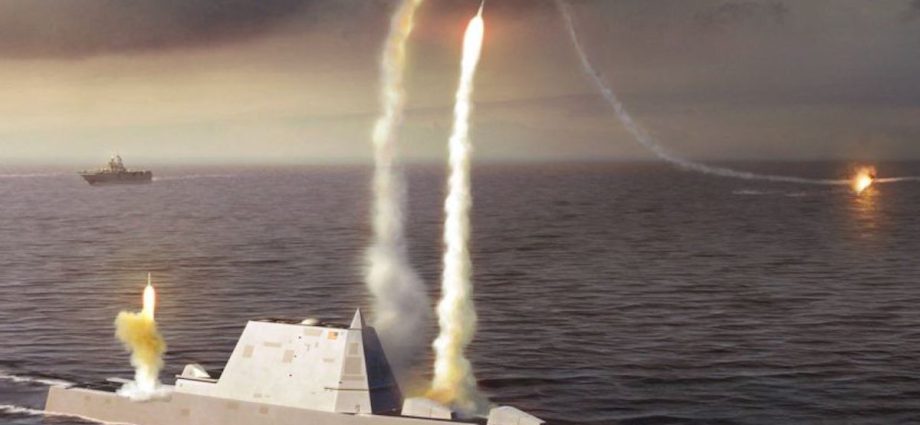The US may be reconsidering the redeployment of nuclear-tipped, submarine-launched cruise missiles, possibly triggered by China and Russia’s growing nuclear arsenals and shortfalls in US conventional deterrent capabilities.
This month, Defense News reported that House Republicans in the US Armed Services Committee voted along party lines to amend the fiscal 2024 National Defense Authorization Act to create a program of record for the sea-launched cruise missile nuclear (SLCM-N) program.
The report mentions that the House’s FY24 defense authorization bill will provide US$196 million for continued SLCM-N development and that it is scheduled for a full floor vote in early July.
“The nuclear threat environment is changing rapidly… China’s arsenal is expanding dramatically and Russia’s arsenal continues to grow. We must adjust our nuclear posture,” said Congressman Doug Lamborn, chairman of the Subcommittee on Strategic Forces.
Reuters reported in October 2022 that the Biden administration said the SLCM-N was unnecessary and would be canceled since the US already had the means to deter limited nuclear use. Critics countered the move would erode the US’ deterrent posture and send the wrong message to China and Russia.
In line with the Biden administration’s position, the Center for Arms Control and Non-Proliferation notes that SLCM-Ns weaken the US Navy’s conventional warfighting capabilities, potentially diverting the already overstretched US submarine force to nuclear deterrent roles.
The center’s report mentions that some US allies that prohibit nuclear weapons on their territories, such as Japan and New Zealand, may prohibit nuclear-armed US ships from docking at their ports or engaging in joint exercises, forcing the US to bring back nuclear weapons to allies that don’t currently house them or pick up such weapons before venturing on deployment.
The Center for Arms Control and Non-Proliferation also notes that the SLCM-N would be a redundant capability, as the US already has other low-yield nuclear options such as the B61 gravity bomb, the W80-equipped air-launched cruise missile and the W76-2 sea-launched ballistic missile.
However, SLCM-N advocates point out a deterrence gap between the US and its regional adversaries and near-peer rivals, which makes reviving the controversial program necessary.
Asia Times noted in October 2022 that although the US deployed the SLCM-N on surface ships and submarines, it retired that capability at the end of the previous Cold War. In contrast, adversaries China and Russia have continued to modernize their respective nuclear arsenals.

While the US nuclear arsenal at sea now consists of only strategic submarine-launched ballistic missiles (SLBM), China and Russia have continued to develop low-yield tactical nuclear weapons, which are below the threshold of strategic nuclear weapons and serve as a backstop for conventional military operations.
The singular focus on strategic-level deterrence may have opened a deterrence gap between the US and its near-peer rivals, with the SLCM-N providing a tactical nuclear strike capability to match China and Russia’s tactical nuclear weapons.
The push to revive the SLCM-N may also indicate larger weaknesses in US conventional deterrence, with tactical nuclear weapons making up for conventional capability gaps.
Asia Times reported in March 2023 that China had overtaken the US in developing new types of military explosives, notably CL-20, which was first developed in the 1980s and is 40% more potent than the RDX or HMX used in US munitions since World War II.
While China started to produce CL-20 in 2011 and has since mass-produced the explosive, the US still employs dated World War II methods, which cannot be used to make CL-20, as production of that explosive is only possible in small batches in chemical reactors.
While the US can make 10 tons of CL-20 with its current stockpile of precursor chemicals, the US needs three to five years to scale up production to make 1,000 tons a year.
In a Taiwan contingency, the US may face large numbers of Chinese munitions, some of which have power and range greater than anything in the US conventional arsenal. Delays in crucial US weapons programs may have also contributed to the Republican push to consider the redeployment of SLCM-N.
This month, Asia Times reported significant delays affecting the LGM-35A Sentinel intercontinental ballistic missile (ICBM) and Zumwalt-class destroyer programs, which may indicate deeper institutional problems with profound capability implications.
The LGM-35A Sentinel program is facing delays due to staffing shortfalls, delays in clearance processing, classified information technology infrastructure challenges and technology maturity issues.
Similarly, hypersonic technology maturity concerns have delayed the integration of the Conventional Prompt Strike (CPS) weapon on Zumwalt-class destroyers, pushing the reconfigured type’s redeployment to 2025.
However, the strategic notion that tactical nuclear weapons such as SLCM-N can make up for conventional deterrence shortfalls may be catastrophically unsound.

Nina Tannenwald notes in a March 2022 article for Scientific American that tactical nuclear weapons exist because each side fears it would be deterred from using its big city-razing weapons by their very destructiveness.
By making nuclear weapons smaller and the targeting more precise, she writes, their use becomes more thinkable. Paradoxically, while this makes deterrence threats more credible, it also makes the arms more tempting to use first, rather than simply in retaliation.
Tannenwald notes that even limited use of tactical nuclear weapons can cause massive destruction, appalling human suffering, long-term environmental damage and quickly escalate to a full-scale nuclear war.

